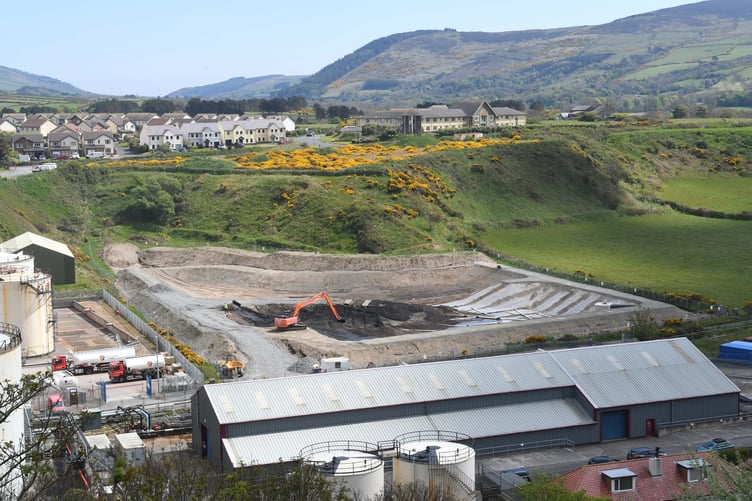A government department has applied to extend the life of a silt storage lagoon - the day before the existing planning consent expired.
The lagoon and pipeline was constructed in early 2020 alongside the River Neb near Ballaterson Farm to storage potentially toxic silt dredged from Peel Marina.
It was only supposed to be temporary until March 8 this year. Some 44,000 tonnes of silt are stored there.
But now the Department of Infrastructure has applied for planning permission (24/00301/B) to extend its operation and postpone its decommissioning until the end of December 2026.
The latest application requests approval to retain the infrastructure, pending the department finding a ‘sustainable and cost-effective waste management option’ for the dredged material. Some 11,000 tons of silt dredged from the marina were dumped in a storage facility excavated in a field at Rockmount, on the Poortown Road, German, between April and May 2015.
That facility was also supposed to be temporary and last no more than five years.
The lagoon is designed as a cost-effective way to ‘de-water’ the silt and so make it easier to transport.
An environment impact assessment included as part of the latest planning application outlines three alternative options for the ultimate disposal of the material - re-using it for land restoration, disposing of it at landfill and exporting it for disposal off-island,.
The report says the preferred option is to use the de-watered silt for capping and landscaping derelict mining land at Cross Vein.
Known locally as Snuff the Wind, the mine closed some 140 years ago but spoil heaps in the are still contain heavy metals including lead and zinc.
Once a popular spot for off-road motorcycling, it has been been closed to the public since 2020 due to the risk that historical mining waste would be disturbed.
Under this option outlined in the environment impact assessment, the de-watered silt would be transported to the former mine workings by tipper truck and the material would then be treated on site by encapsulating it and or using a binding agent such a cement, lime of pulverised fuel ash to stop the metals within from leaching into the surrounding environment.
The report states: ‘The re-use of dredged material for restoring land within the River Neb catchment is the preferred option because it would support a long-term plan to reduce metal concentrations in the marina’s sediment by addressing the contamination problem at its sources including the former Cross Vein Mine.’
An added benefit would be offsetting the use of non-renewable aggregate resources and avoiding filling limited landfill space.
The report does not state what if, anything, would be done about the legacy of toxic waste that had been dumped in the old mineshaft in the past.

.jpeg?width=209&height=140&crop=209:145,smart&quality=75)

.jpeg?width=209&height=140&crop=209:145,smart&quality=75)
.jpeg?width=209&height=140&crop=209:145,smart&quality=75)
Comments
This article has no comments yet. Be the first to leave a comment.